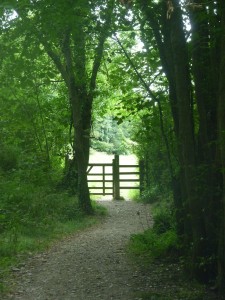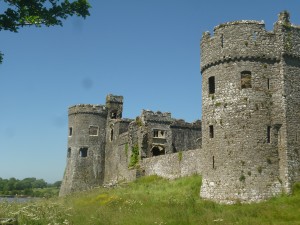Storytelling Starters ~ Walking
Saturday, July 29th, 2017 Ever tried it? You think of a walk you like to take. Or one you regularly took in the past. Then you take the walk again, this time sitting in an armchair or lying down. To start, you summon up a sense of where the walk begins, the moment you feel aware of what lies ahead. Then you continue, envisaging the next bit and the next and the next. And so you go on, also thinking about the pausing points – the meadow where there are sometimes cows and the part that’s often wet underfoot so that you have to negotiate your footsteps, the smells of the wooded part of the walk with its wild garlic and soggy leaves and also such sights as that of the strange fairy doll that must have been pushed by someone, who knows who, into the hollow trunk of a fallen tree.
Ever tried it? You think of a walk you like to take. Or one you regularly took in the past. Then you take the walk again, this time sitting in an armchair or lying down. To start, you summon up a sense of where the walk begins, the moment you feel aware of what lies ahead. Then you continue, envisaging the next bit and the next and the next. And so you go on, also thinking about the pausing points – the meadow where there are sometimes cows and the part that’s often wet underfoot so that you have to negotiate your footsteps, the smells of the wooded part of the walk with its wild garlic and soggy leaves and also such sights as that of the strange fairy doll that must have been pushed by someone, who knows who, into the hollow trunk of a fallen tree.
So you continue and when you reach the long tangle of intertwined boughs just before that stone pillar, remains of a long-ago project that would have created a vast harbour here, you know you are now within the smell and sound of the sea. So as you reach the narrow path that leads down to the pebble banks, you are full of anticipation, eager to see what kind of waves there will be and whether anyone has left some strange tower of stones somewhere along the length of the beach as a kind of tribute to the wind and the weather.
Once again, you fill with gratitude as you realise that this is one of your places. Gratitude for the walking and the being able to do it, gratitude for the fact that the place is still here, gratitude for the memory that enables you to recall it at will if you want to on any of the days that you’re actually there. (more…)




